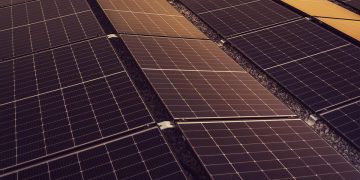Powering the Future: Unleashing the Potential of Renewable Energy Sources
As the world faces the challenges of climate change and dwindling fossil fuel reserves, the need to transition to renewable energy sources has never been more urgent. Renewable energy, which includes sources such as solar, wind, hydroelectric, and geothermal power, offers a sustainable and environmentally friendly alternative to traditional forms of energy production. In this article, we will explore the potential of renewable energy sources and their role in powering the future.
The Benefits of Renewable Energy
One of the key advantages of renewable energy sources is their sustainability. Unlike fossil fuels, which are finite resources that will eventually be depleted, renewable energy sources are abundant and inexhaustible. This means that we can rely on renewable energy to meet our energy needs for the long term without worrying about running out of fuel.
Renewable energy sources also have a much lower environmental impact than traditional forms of energy production. Burning fossil fuels releases harmful greenhouse gases into the atmosphere, contributing to climate change and air pollution. In contrast, renewable energy sources produce little to no emissions, making them a cleaner and more sustainable option for power generation.
Additionally, renewable energy sources can help to reduce our dependence on imported fossil fuels, which can be subject to price fluctuations and geopolitical instability. By investing in renewable energy infrastructure, countries can increase their energy security and reduce their reliance on foreign oil and gas imports.
The Potential of Solar Power
Solar power is one of the most promising renewable energy sources, with the potential to revolutionize the way we generate electricity. Solar panels convert sunlight into electricity through the photovoltaic effect, providing a clean and renewable source of power for homes, businesses, and communities.
One of the key advantages of solar power is its scalability. Solar panels can be installed on rooftops, in large solar farms, or even in space, making it a versatile and adaptable source of energy. As the cost of solar panels continues to decrease and efficiency continues to improve, solar power is becoming an increasingly cost-effective and viable option for power generation.
In addition to its environmental benefits, solar power also has the potential to create jobs and stimulate economic growth. The solar industry is already a major employer in many countries, and as demand for solar panels continues to grow, so too will the opportunities for job creation and economic development.
The Promise of Wind Power
Wind power is another renewable energy source with significant potential for growth and expansion. Wind turbines harness the power of the wind to generate electricity, providing a clean and renewable source of energy for communities around the world.
One of the key advantages of wind power is its abundance. Wind is a free and abundant resource that is available in virtually every corner of the globe, making it an ideal source of energy for countries looking to reduce their reliance on fossil fuels and transition to renewable energy sources.
Wind power also has the potential to create jobs and stimulate economic growth. The wind industry is already a major employer in many countries, and as demand for wind turbines continues to grow, so too will the opportunities for job creation and economic development.
The Role of Hydroelectric Power
Hydroelectric power, which harnesses the energy of flowing water to generate electricity, is another important renewable energy source with significant potential for growth and expansion. Hydroelectric power plants can be built on rivers, streams, or other bodies of water, providing a reliable and renewable source of energy for communities around the world.
One of the key advantages of hydroelectric power is its reliability. Unlike solar and wind power, which can be intermittent depending on weather conditions, hydroelectric power is a constant and consistent source of energy that can be relied upon to meet our energy needs day in and day out.
Hydroelectric power also has the potential to provide important benefits for water management and flood control. By regulating the flow of water in rivers and reservoirs, hydroelectric power plants can help to mitigate the impact of floods and droughts, providing important benefits for communities living in flood-prone areas.
The Potential of Geothermal Power
Geothermal power, which harnesses the heat of the earth’s interior to generate electricity, is another important renewable energy source with significant potential for growth and expansion. Geothermal power plants can be built in areas with high levels of geothermal activity, providing a reliable and renewable source of energy for communities around the world.
One of the key advantages of geothermal power is its reliability. Like hydroelectric power, geothermal power is a constant and consistent source of energy that can be relied upon to meet our energy needs day in and day out. This makes geothermal power an attractive option for countries looking to reduce their reliance on fossil fuels and transition to renewable energy sources.
In addition to its reliability, geothermal power also has the potential to provide important benefits for heating and cooling. Geothermal heat pumps can be used to heat and cool buildings using the heat of the earth’s interior, providing a clean and renewable alternative to traditional heating and cooling systems.
Conclusion
Renewable energy sources such as solar, wind, hydroelectric, and geothermal power offer a sustainable and environmentally friendly alternative to traditional forms of energy production. By harnessing the power of these renewable energy sources, we can reduce our reliance on fossil fuels, mitigate the impact of climate change, and create a more sustainable future for generations to come.
As the world continues to grapple with the challenges of climate change and energy security, investing in renewable energy infrastructure will be critical to powering the future. By unleashing the potential of renewable energy sources, we can create a cleaner, greener, and more sustainable world for all.





